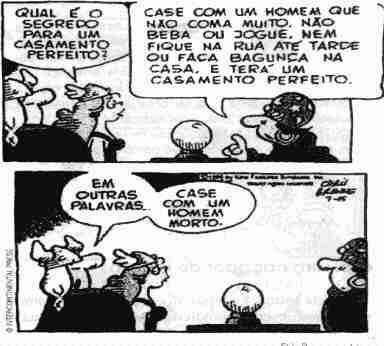Orações Coordenadas

Testes de múltipla escolha sobre orações coordenadas.
- 1.
No período: "Tomou muito sol; ficou, pois, adoentada." a oração destacada é coordenada:
- A.
Assindética
- B.
Sindética aditiva
- C.
Sindética conclusiva
- D.
Sindética adversativa
Correct Answer
C. Sindética conclusivaExplanation
The highlighted clause "ficou, pois, adoentada" in the given sentence indicates a conclusion or result. It shows that the person became ill as a result of being exposed to the sun for a long time. Therefore, the correct answer is "sindética conclusiva" which means that the clause is a coordinating conjunction indicating a conclusive relationship between the two clauses.Rate this question:
-
- 2.
No período: "Quer eu durma quer eu fique acordado, ficarei no quarto." a oração destacada é coordenada:
- A.
Assindética
- B.
Sindética alternativa
- C.
Sindética conclusiva
- D.
Sindética adversativa
Correct Answer
B. Sindética alternativaExplanation
The highlighted clause in the sentence presents two alternative options: "quer eu durma" (whether I sleep) and "quer eu fique acordado" (whether I stay awake). This indicates that the clause is presenting a choice between two possibilities. Therefore, the correct answer is "sindética alternativa," which refers to coordinating conjunctions that present alternative options.Rate this question:
-
- 3.
Em: "Nem comprei o protetor solar, nem fui à praia." temos orações coordenadas:
- A.
Assindéticas
- B.
Sindéticas alternativas
- C.
Sindéticas aditivas
- D.
Sindéticas adversativas
Correct Answer
C. Sindéticas aditivasExplanation
The given sentence "Nem comprei o protetor solar, nem fui à praia" contains two clauses connected by the coordinating conjunction "nem". This conjunction is used to join elements that are similar or have the same value. In this case, both clauses express actions that were not done: "not buying sunscreen" and "not going to the beach". Therefore, the correct answer is "sindéticas aditivas", which refers to coordinating conjunctions used to add or connect similar elements or actions.Rate this question:
-
- 4.
No período: "Comi uma caixa de bombons e não passei mal!", a conjunção E tem valor:
- A.
Conclusivo
- B.
Aditivo
- C.
Explicativo
- D.
Adversativo
Correct Answer
D. AdversativoExplanation
The correct answer is "adversativo". The conjunction "E" in the sentence "Comi uma caixa de bombons e não passei mal!" is used to express a contrast or opposition between two ideas. It indicates that despite eating a box of chocolates, the person did not feel sick.Rate this question:
-
- 5.
Assinale a alternativa que classifica incorretamente a oração coordenada sindética:
- A.
Terminei o meu projeto, logo posso descansar. (explicativa)
- B.
Uso o protetor solar, ou uso o óleo bronzeador. (alternativa)
- C.
Fiquei muito cansada, contudo me diverti bastante. (adversativa)
- D.
Durma, que você precisa de descanso. (explicativa)
Correct Answer
A. Terminei o meu projeto, logo posso descansar. (explicativa)Explanation
The given sentence "Terminei o meu projeto, logo posso descansar" is classified as an explicative coordinate clause. This is because the conjunction "logo" is used to explain the cause-effect relationship between finishing the project and being able to rest.Rate this question:
-
- 6.
No período "Não beba ou jogue", temos, respectivamente, oração coordenada:
- A.
Sindética alternativa e assindética
- B.
Sindética aditiva e sindética alternativa
- C.
Assindética e assindética
- D.
Assindética e sindética alternativa
Correct Answer
D. Assindética e sindética alternativaExplanation
The correct answer is "assindética e sindética alternativa". In this sentence, "Não beba ou jogue" is an example of an assindética coordination, where two independent clauses are linked without any coordinating conjunction. "Temos" is the main verb of the sentence and introduces the second independent clause, which is an example of sindética alternativa coordination, where two independent clauses are linked with the coordinating conjunction "e" (and).Rate this question:
-
- 7.
Na fala da cigana, podemos encontrar, além de duas orações alternativas:
- A.
Duas orações sindéticas aditivas
- B.
Duas orações sindéticas conclusivas
- C.
Duas orações sindéticas explicativas
- D.
Duas orações sindéticas adversativas
Correct Answer
A. Duas orações sindéticas aditivasExplanation
The correct answer is "duas orações sindéticas aditivas." In the given sentence, "na fala da cigana" is the first independent clause, and "podemos encontrar" is the second independent clause. These two clauses are connected by the coordinating conjunction "além de," indicating addition or inclusion. Therefore, they are classified as "duas orações sindéticas aditivas," meaning two syndetic additive clauses.Rate this question:
-
- 8.
Nas orações acima, a conjunção MAS poderia ser substituída por:
- A.
Nem
- B.
Pois
- C.
Todavia
- D.
Portanto
Correct Answer
C. TodaviaExplanation
In the given sentences, the conjunction "MAS" can be replaced by "todavia". This is because "todavia" is a synonym for "mas" and also conveys the same meaning of contrast or contradiction between the clauses.Rate this question:
-
- 9.
As orações que não possuem conjunção são chamadas de __________________.
Correct Answer
assindéticasExplanation
The correct answer is "assindéticas". This term refers to sentences that do not have a conjunction connecting them. In other words, assindetic sentences are independent clauses that stand alone without any coordinating conjunctions. They can be used to emphasize each clause individually or to create a sense of urgency or rapidity in the narrative.Rate this question:
- 10.
Una as duas orações com uma conjunção adequada: Ela estudou muito para o testão; conseguirá, ________________ uma boa nota.
Correct Answer
portanto, pois, então, por conseguinteExplanation
The conjunction "portanto" is the correct choice to complete the sentence. It indicates a logical conclusion or consequence, which fits well in the context of the sentence. The other options "pois", "então", and "por conseguinte" do not provide the same meaning and would not be suitable in this context.Rate this question:
Quiz Review Timeline +
Our quizzes are rigorously reviewed, monitored and continuously updated by our expert board to maintain accuracy, relevance, and timeliness.
-
Current Version
-
Jul 22, 2024Quiz Edited by
ProProfs Editorial Team -
Feb 14, 2012Quiz Created by
Robert Ramos
 Back to top
Back to top



